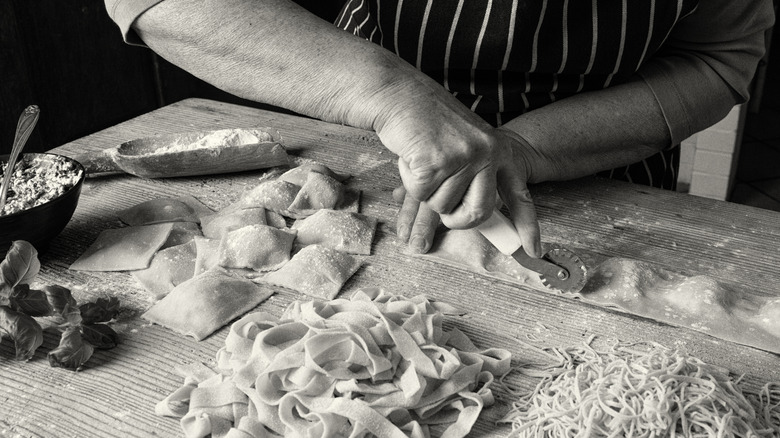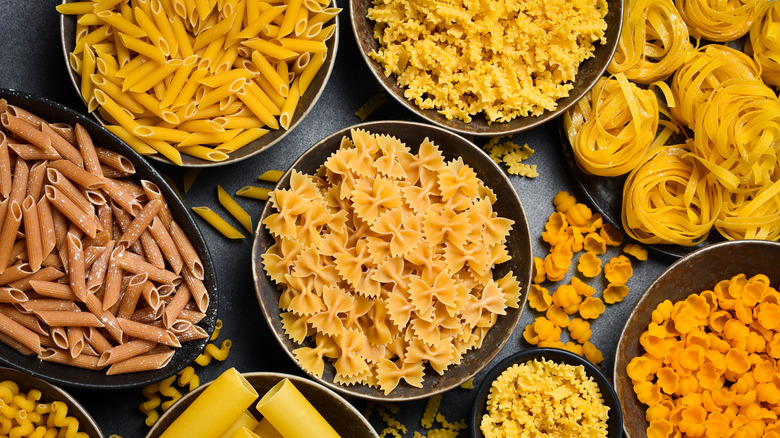The Affordable Pasta Dish Once Eaten By Soviet-Era Soldiers
Pasta has long been hailed for its affordability and versatility. Many cultures around the world have clung to it and even developed their own unique shapes and variations. For 18th-century Russian soldiers, specifically those in the navy, makaroni po-flotski, or "navy-style macaroni," became a staple dish that lasted even through the Soviet era. Broken down, this meal is as basic as you can get while still covering most of your necessary food groups. In its most basic form, it contains pasta, meat, onion, and tomato paste.
The key features of this dish were that it needed to be made with shelf-stable or non-perishable foods, able to be cooked in bulk (we're talking for dozens — if not hundreds — of men), and filling. What's more, it had to be affordable. As a result, canned meat (usually corned beef) was a favorite as it can stay put in the pantry, though other recipes prefer minced meat just for its convenience.
In the aftermath of World War II, this dish gained popularity on a wider scale and was a regular feature for feeding crowds. With that said, the Russian health department actually blacklisted the dish in schools in the '90s over concerns that there was inadequate heating available in the two-hour timeframe between preparing the meal and serving it to students. It's unclear how popular the dish remains today, though it's fair to assume a meal as basic and tasty as this is pretty timeless.
Variations on navy-style macaroni
Given that this dish uses only a few staple ingredients, it lends itself well to variations. Firstly, it can be made vegan using meat alternatives, tofu, or beans. So long as you have a good source of protein, you should be able to easily replicate this meal meat-free. If you are carnivore-inclined, you can change the dish up with chicken, turkey, Spam, or whatever is on sale at the grocery store to keep things within your budget. Ground or minced versions of all these meats will be the easiest to work with, but the cooking process will work exactly the same way if you get whole pieces and chop them up ahead of time.
As for additional tastes, the primary flavor factor here is the onion, so there's a lot of room to play with seasonings or sauces. The original recipe uses tomato paste, but you can substitute that for barbecue sauce. Many spices have a long shelf life (especially when stored the correct, Alton Brown way) and, push come to shove, garlic powder, paprika, and pepper can build some powerhouse meals time after time.


